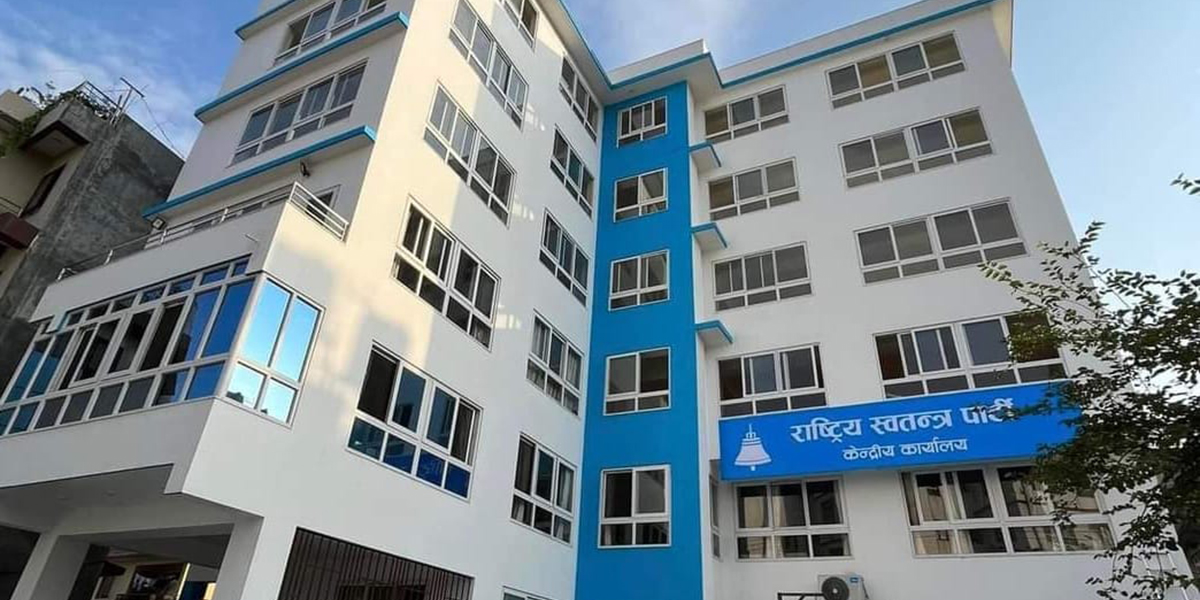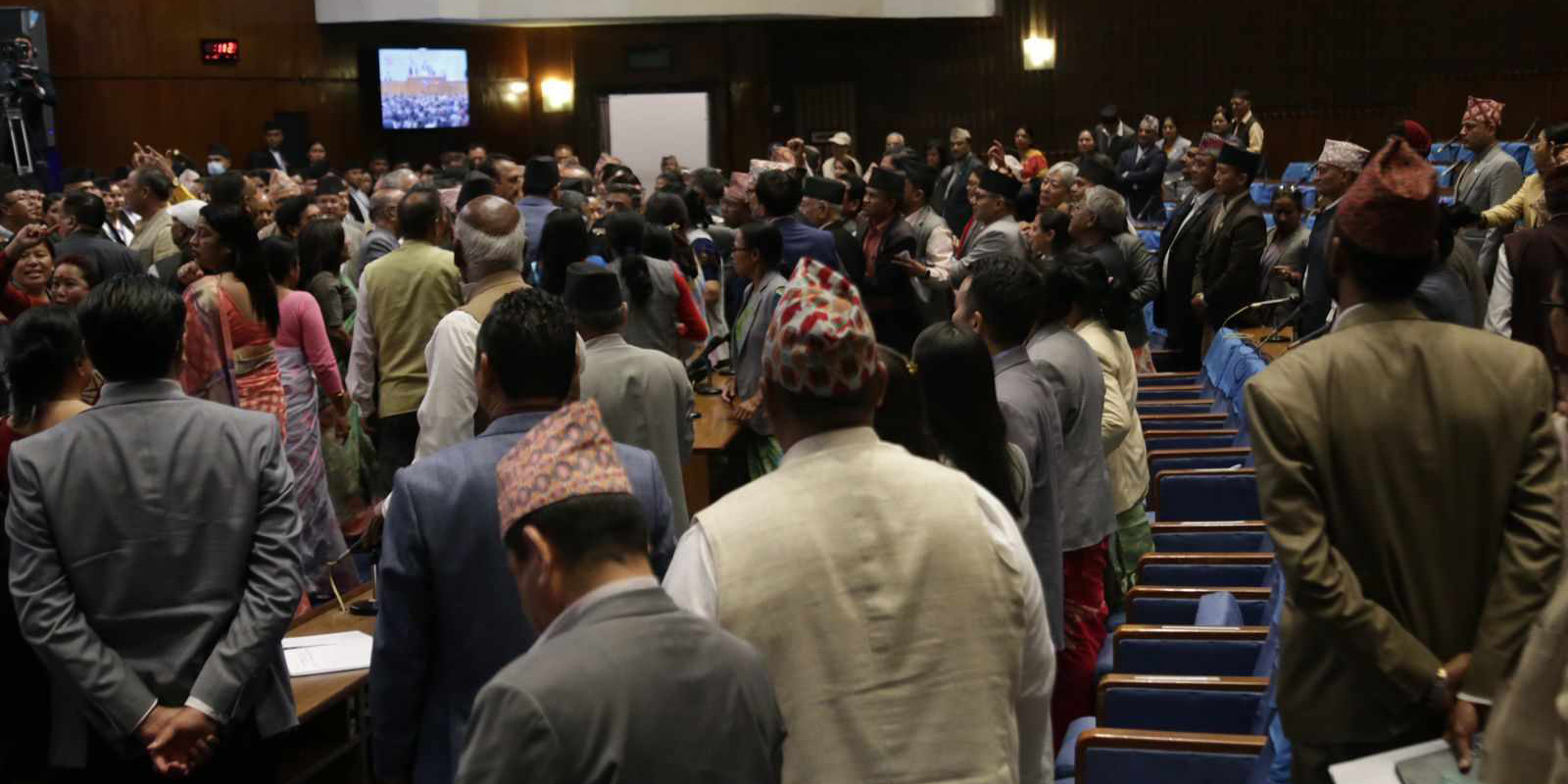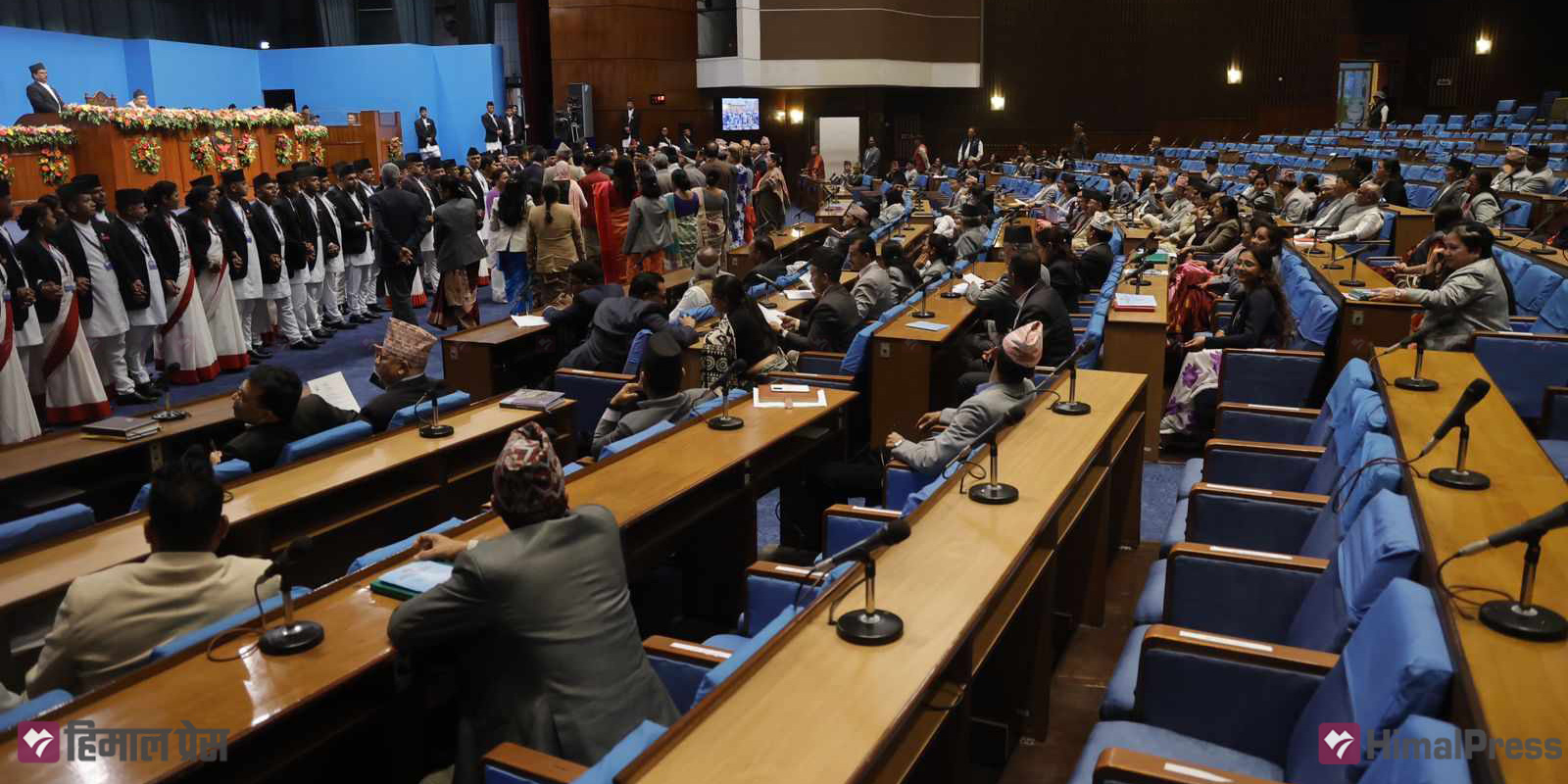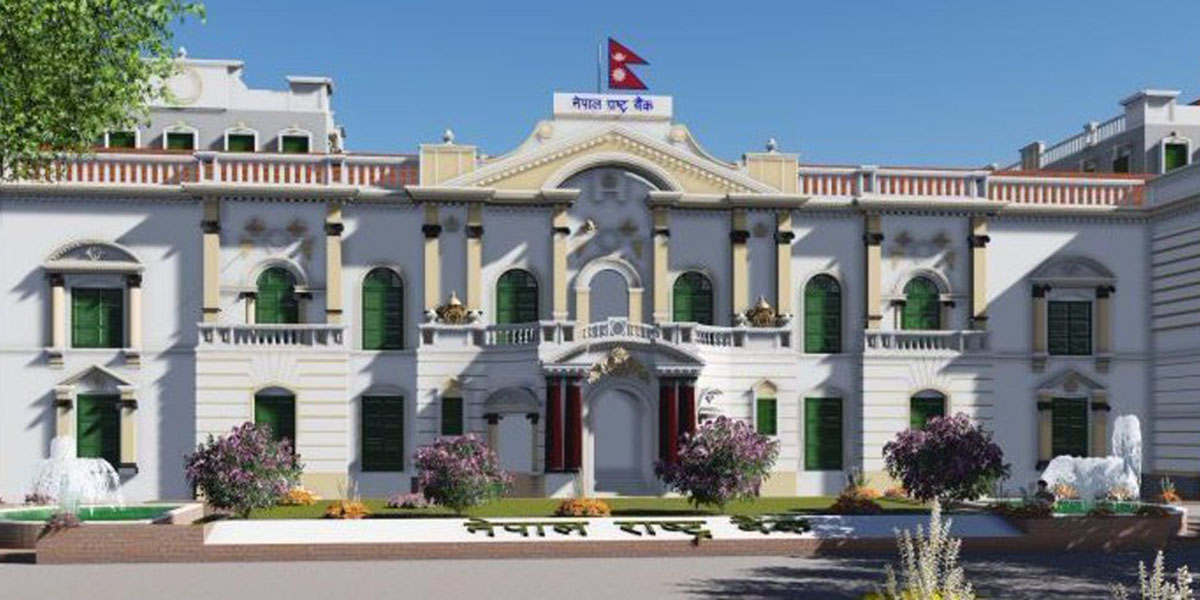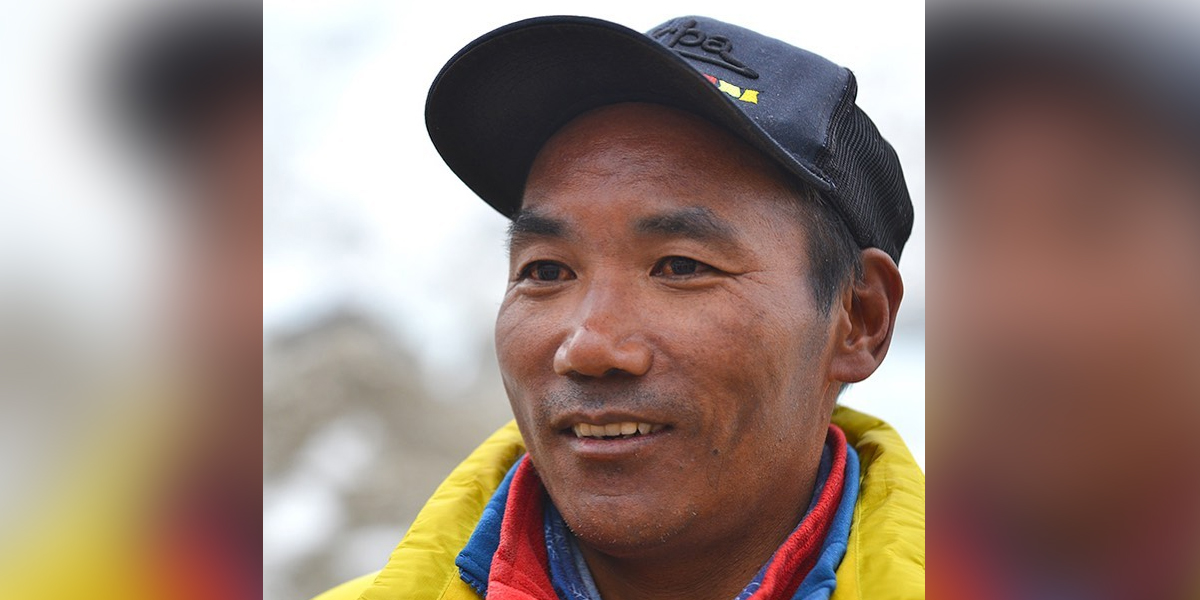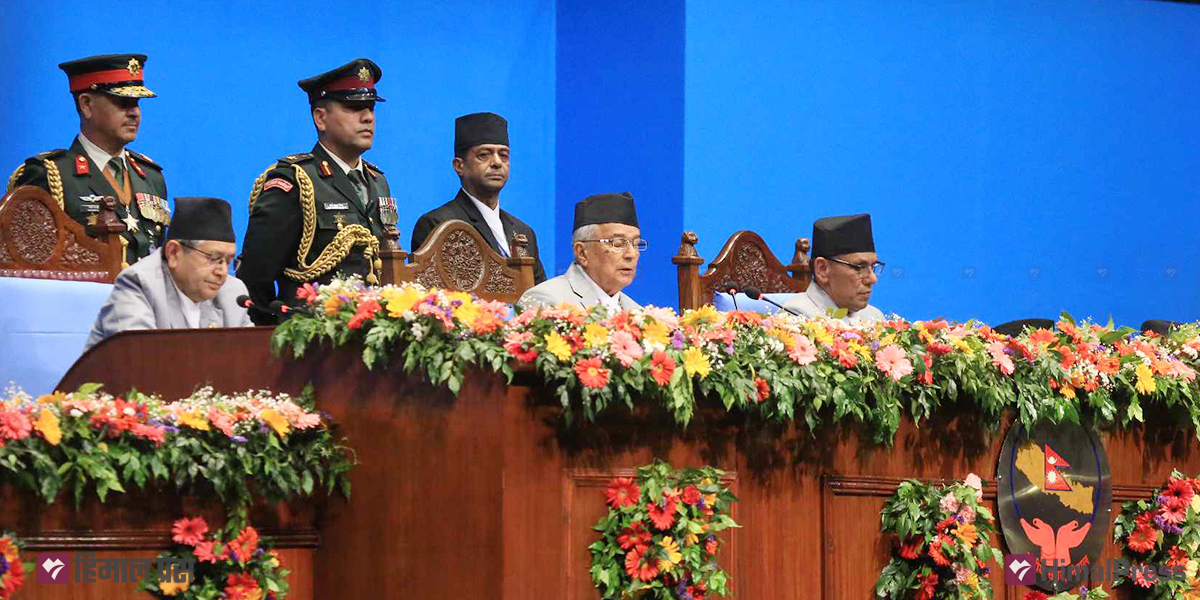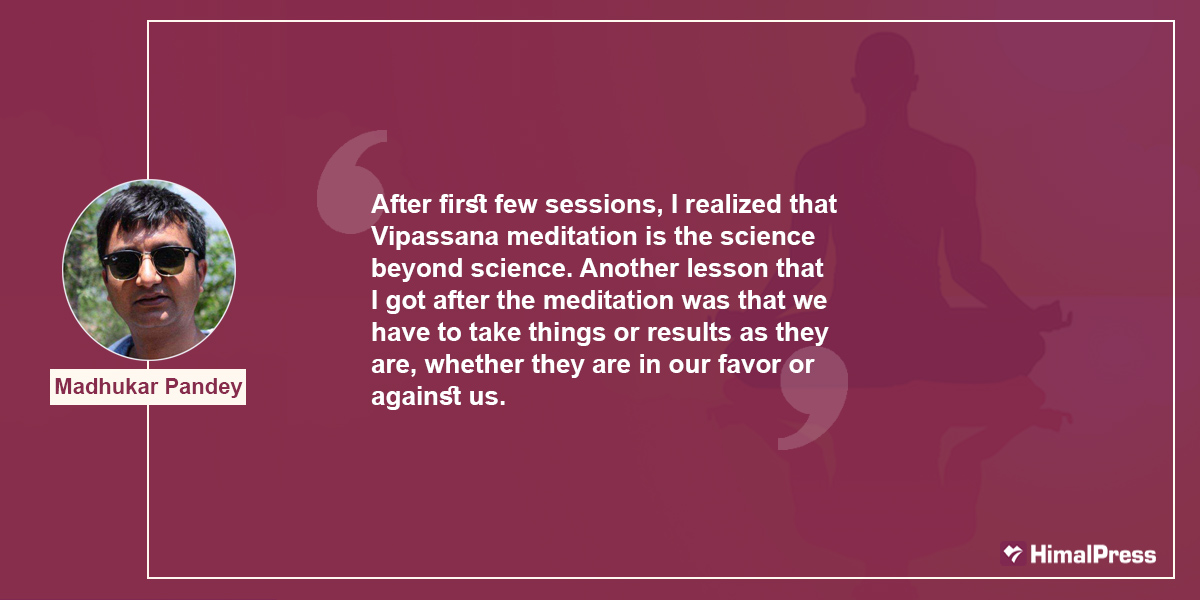
‘Your destination is on the right,’ Google Maps directed me in an automated voice. I was excited to get to the center. ‘Is this a Vipassana meditation center?’ I asked a person who was in a thick red shirt and jeans. He nodded and suggested that I park my vehicle in the parking lot. Before I headed to the parking lot, he offered to bring my bag inside the gate. I hesitated, but he pulled the bag without waiting for my response. I entered the center, where many people were filling out the registration form with great enthusiasm. I asked for a form and completed it within a minute.
‘Do you know the rules that you will follow inside the center for these 10 days?’ a man at the counter asked me with a mild smile. “I have not gone through them yet,” I replied. He handed me a four-page pamphlet. On the top of the pamphlet, there was a sentence in bold letters – ‘Students should maintain noble silence’. The remaining rules were: students should abstain from lying; they should abstain from sexual intercourse; avoid food from outside; and should not be involved in killing.
‘How beautiful are these rules?’ I spoke to myself. Then I went to the desk and submitted the paper. He then showed me a counter where I should keep all my valuables, including my mobile phone. I headed towards the counter and dialed my wife Shrijana’s number.
“I am going to submit my mobile,” I told her. “That’s great,” she replied in a teasing voice. “Will you continue the meditation or quit it in between?” she asked. “I am committed,” I replied firmly. She wished me all the best, and I thanked her. Then I submitted my mobile phone and some cash that I was carrying at the counter.
I then went to the room assigned to me. It was an R-8B. I was happy since the room had an attached bathroom. I settled in and laid down on the bed. After a while, a person, who I would know after ten days, entered the room. As the noble silence had begun, we did not talk to each other. I observed him thoroughly, even though I did not have time to talk with him. He was wearing a red jacket, and I thought he might be around 55 years old. Again, I dived into thoughts about him. ‘Where is he from? What might be his profession?’ I talked to myself.
I came out of the room. The weather was quite good. Although it was mid-August, there was not any sign of high temperature. I was completely enamored with the outdoors after leaving the room. I heard the chirping of birds after more than a decade. I dwelt on nostalgia for some time. I used to hear these sweet sounds of birds in Resunga, one of the dense forests in Gulmi district, where I would go to fetch firewood or fodder. I felt I had gone back to those days.
Suddenly, I heard the bell ringing and one of the volunteers indicated to me that it’s time for dinner. There were almost 50 people standing in line before me in the dining hall. Volunteers would serve the food to the students. I took my food and washed my plates.
‘What a great experience!’ I spoke to myself. After dinner, we were called to Room No. 5 for the orientation. A middle-aged man, who was dressed in white, began to speak in both Nepali and English. He read out the rules that we should follow strictly over the next 10 days. Before concluding, he said: “If you think that you are in the wrong place, you still have time to quit. However, once you begin the course, you cannot quit?”
I thought it must be more difficult than I expected. After the orientation, we were handed seat numbers in the Dhamma Hall. I received C-4 with my nameplate. After that, we were called into the Dhamma Hall for meditation, and my 10-day meditation course started.
The daily routine of the center was really grueling. Participants had to wake up by 4 in the morning, and after freshening up for half an hour, they were required to reach the Dhamma Hall by 4:30 am. It was really difficult to catch up with this schedule for a slow-witted person like me.
Know Yourself
The daily routine of the center was really grueling. Participants had to wake up by 4 in the morning, and after freshening up for half an hour, they were required to reach the Dhamma Hall by 4:30 am. It was really difficult to catch up with this schedule for a slow-witted person like me. I managed somehow, thanks to my roommate. Even though we never talked during those 10 days, he helped me a lot. When I sat for the meditation on the first day, I saw four teachers, almost in the same white dress, in front of us. Among them, one was a senior teacher, and the remaining three were his assistants. There were flower vases which divided the hall into half – male students on the left side of the hall, and female students on the right.
An audio was played at the beginning of the meditation. It instructed us to close our eyes and gently observe respiration as the air goes out and comes in. I tried to concentrate on the respiration. However, my mind would sometimes go to the classrooms or the scene of the board meetings. When I realized that I was in meditation, I would bring my thoughts back for less than a minute, but they would jump into many places. I encountered two problems initially. First, I could not control my mind even for a minute, and second, there was unbearable pain in my knee. From the third day onward, I gradually improved my concentration.
Day 4 was Vipassana Day. Our meditation pattern changed from that day onward. The same audio instructed us to observe our bodies one part after another equanimously. I began to feel the sensation in my body, and there was not much flickering in my mind. I observed my body from head to toe and toe to head, turn by turn. Vipassana Day was more complex. It was difficult for two reasons: first, it was the first time I had stayed in the same position for more than two hours without any movement; and second, there was an unbearable pain in my legs, hands, backbone, and even in my thigh. When the first sitting of Vipassana meditation came to an end, I felt totally different. As it was the first attempt, I came to know the answer to why many people left the course in between.
The next two days were again complicated for me. However, I got used to it day by day. After lunch, there was almost one and half hours of rest time. During that time, I thought about the power of meditation. I also contemplated our body structure. Finally, I realized that Vipassana meditation is the science beyond science. Another lesson that I got after the meditation was that we have to receive things or results as they are, whether they are in our favor or against us.
Live in the Present
As the schedule was strict, a discourse was scheduled for 7-8 pm every day. In one of the discourses, SN Goenka described the role of the human mind that led to our sorrow or happiness. In the video lecture, he further argued that humans always become unhappy since they never accept the present reality. In their quest for happiness, they forget their present and then dive into either the past or the future. He further reiterated that these unfulfilled desires or quests develop cravings and aversions in the human mind. Therefore, human beings create sorrow and pain themselves. He further stated that if one wants to be liberated from all these problems, unhappiness, and sorrow, one should accept reality as it is. Therefore, he claimed, in a firm voice, that Vipassana meditation is an elixir for all these pains and sorrows. I was fully persuaded.
Science of Noble Silence
During the meditation session, participants were not allowed to speak with any fellow students, not even with their roommates. If they had an urgent issue, they could quietly and softly approach the teachers or volunteers. I noticed that throughout the course, nobody made eye contact. In the absence of nonverbal communication, there was no opportunity for idle conversation or wasting time on unnecessary matters.
On Day 10, at 10 am, we were finally allowed to speak. We shared our feelings and even our experiences. I went to my roommate nearby and begged for forgiveness if I had done something wrong to him. He was very kind to me and told me that it was an opportunity for us to get to know each other. I was really happy to listen to him. After having dinner and the regular discourse, we went to bed.
“Madhu Sir,” he asked me by my name. “I have a plan. I am from Lalitpur. Near my residence, there is public land that is not in use. I will request that our mayor establish a Vipassana Meditation Center there.”
“Will he listen to you?” I questioned.
“Of course, he will,” he replied.
When I observed his confidence, I had an epiphany. This is Vipassana!
(Pandey teaches Writing and Communication at Nepal Mega College)





